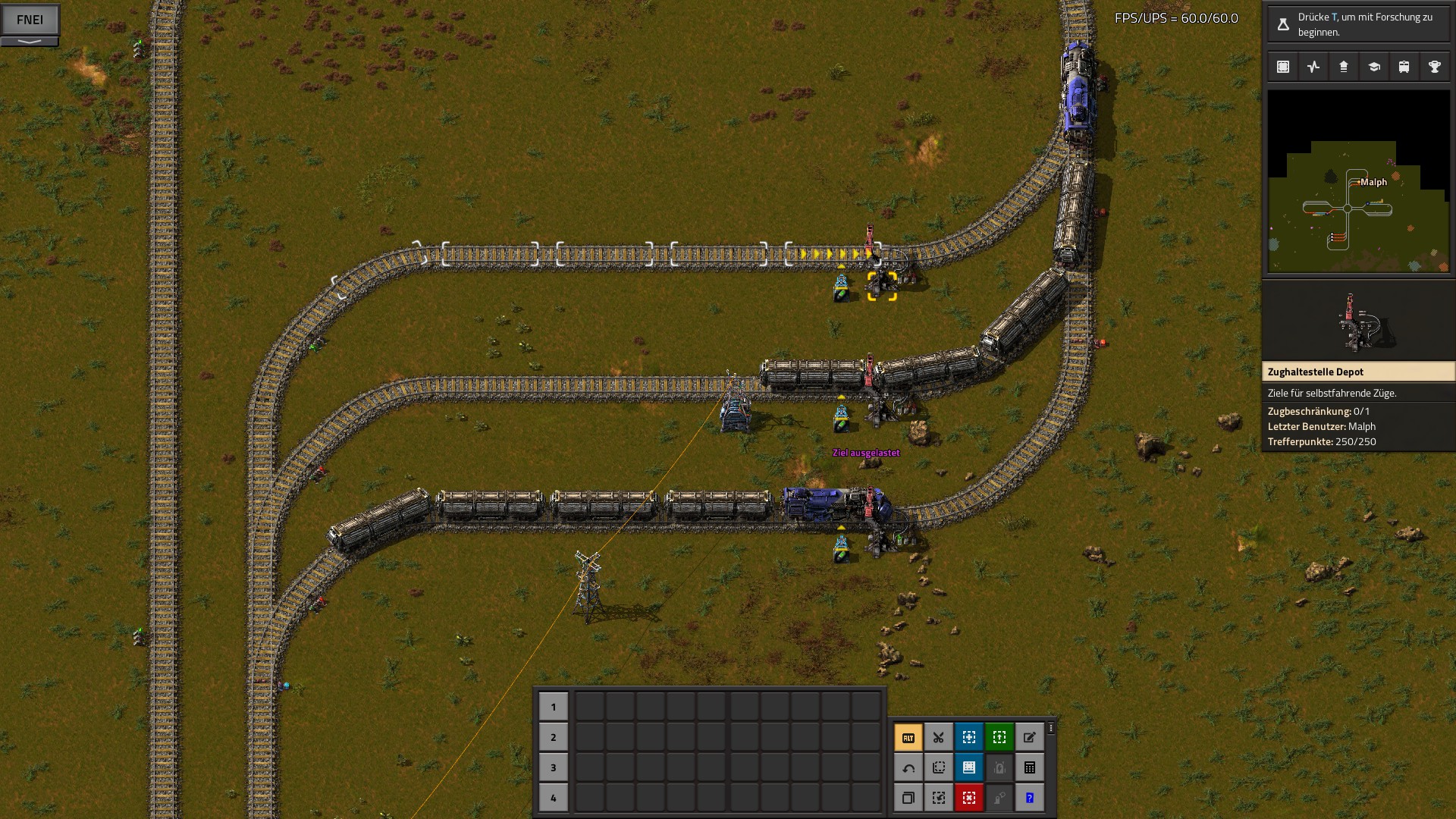


The rule to remember is: place a chain signal going into a junction and standard signals going out of a junction. If I then block the exit this train now stops before entering the junction so it doesn't prevent this one from running. Go ahead and replace all the entrances with chain signals and let these run. This tells the train to stop unless its intended exit is clear. If one of the exits is green, while another is red, then the chain signal is blue. And similarly when both signals are red, the chain signal is red. When both signals are green, the chain signal is also green. Chain signals also stop trains from entering a block but unlike standard signals, which operate independently, chain signals will copy the state of signals further along the track. However if a train can't exit, then the junction becomes blocked and other trains can't use it. When the junction block is clear, trains are allowed to enter. You can manage traffic through a junction using the same standard signals. A more efficient solution is to have a main line and branch off where necessary. A circular network is one of the most simple setups but eventually it becomes impractical to add new stations. Now the trains can move out of the way of each other. To remove the deadlock we need to create at least one additional block by placing another signal. Both of the blocks are occupied by one of the trains and the signals are preventing the other from entering. Each colour represents a different block. As of version 0.16 you can now see the blocks by holding a signal whereas in previous versions you had to use the debug console. A signal marks the start of a block and prevents a train from entering unless the block is clear. So how do we solve this? Well first we have to understand the track mechanics in Factorio. This setup has created a deadlock where neither train can proceed. This is because signals won't allow trains to pass while there's another occupying the tracks ahead. After a while the trains leave the station but they will stop at the signals. Let's place a signal in front of each station and set the trains to run automatically. If you want to control trains travelling in both directions you need to place signals on both sides. Trains traveling in the direction of the arrows are affected by the signal while trains travelling in the opposite direction will ignore it. If you hover over one of the squares arrows will appear along the track. These mark the places where you can place the signal. When I select a signal you'll notice green squares appear on each side of the tracks. Here we have a simple circular track with two trains both stopping at each station. Let's take a look at the standard signal first. Factorio has two types of signals: rail signals and rail chain signals. However without any form of traffic management trains will eventually collide with one another causing damage. In the early game you can accomplish this with conveyor belts but as your base expands it's more efficient to build a train network and even more so to have multiple trains share the same tracks. To do this you'll need to transport resources and components from one part of the base to another. Factorio is a game in which you build sprawling factories to produce research, ammunition to defend yourself from the local wildlife and finally the components to build a rocket to get off-planet and win. In this video we're looking at train signals in Factorio.


 0 kommentar(er)
0 kommentar(er)
